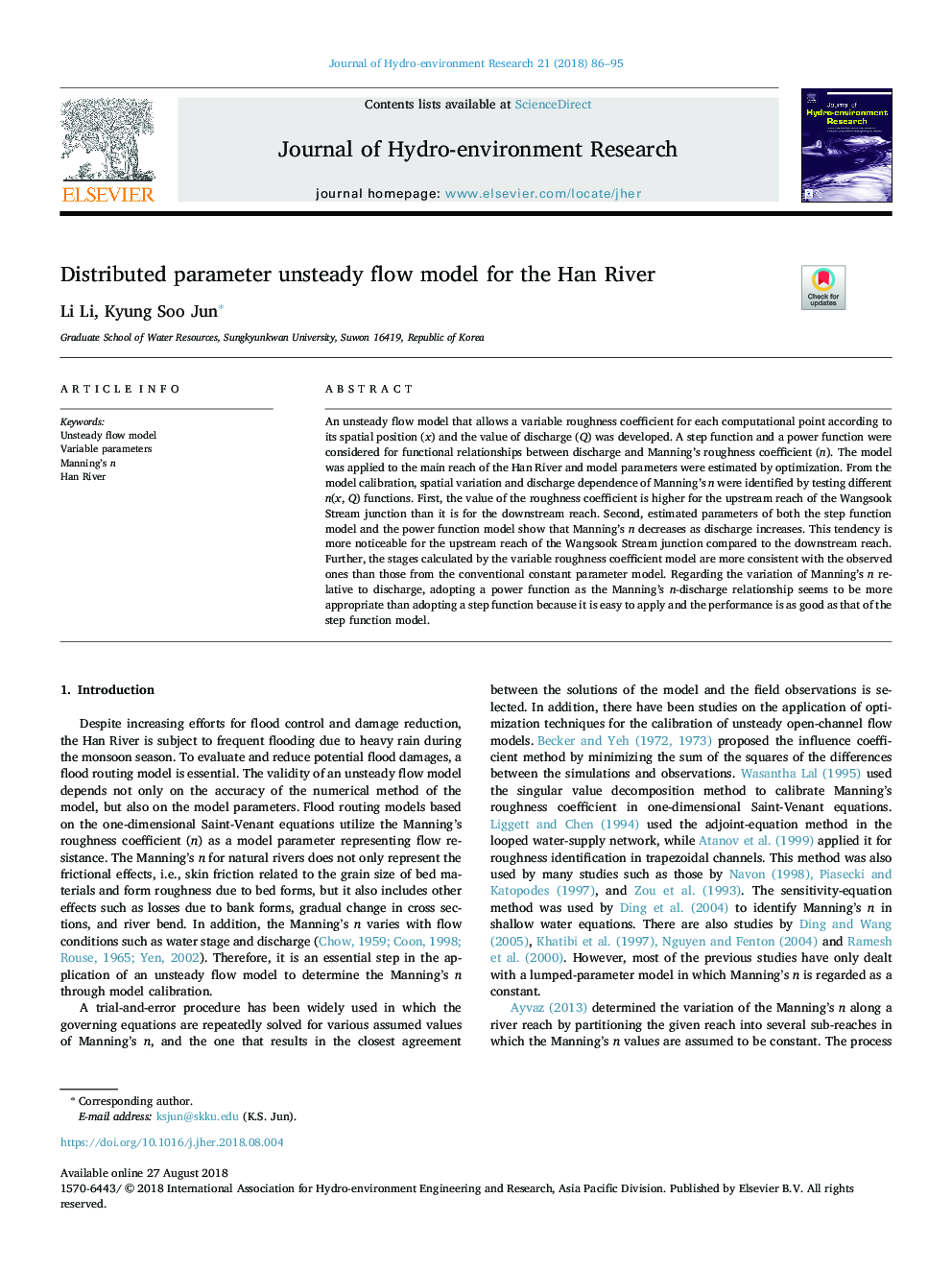| Article ID | Journal | Published Year | Pages | File Type |
|---|---|---|---|---|
| 10116462 | Journal of Hydro-environment Research | 2018 | 10 Pages |
Abstract
An unsteady flow model that allows a variable roughness coefficient for each computational point according to its spatial position (x) and the value of discharge (Q) was developed. A step function and a power function were considered for functional relationships between discharge and Manning's roughness coefficient (n). The model was applied to the main reach of the Han River and model parameters were estimated by optimization. From the model calibration, spatial variation and discharge dependence of Manning's n were identified by testing different n(x, Q) functions. First, the value of the roughness coefficient is higher for the upstream reach of the Wangsook Stream junction than it is for the downstream reach. Second, estimated parameters of both the step function model and the power function model show that Manning's n decreases as discharge increases. This tendency is more noticeable for the upstream reach of the Wangsook Stream junction compared to the downstream reach. Further, the stages calculated by the variable roughness coefficient model are more consistent with the observed ones than those from the conventional constant parameter model. Regarding the variation of Manning's n relative to discharge, adopting a power function as the Manning's n-discharge relationship seems to be more appropriate than adopting a step function because it is easy to apply and the performance is as good as that of the step function model.
Keywords
Related Topics
Life Sciences
Agricultural and Biological Sciences
Agricultural and Biological Sciences (General)
Authors
Li Li, Kyung Soo Jun,
